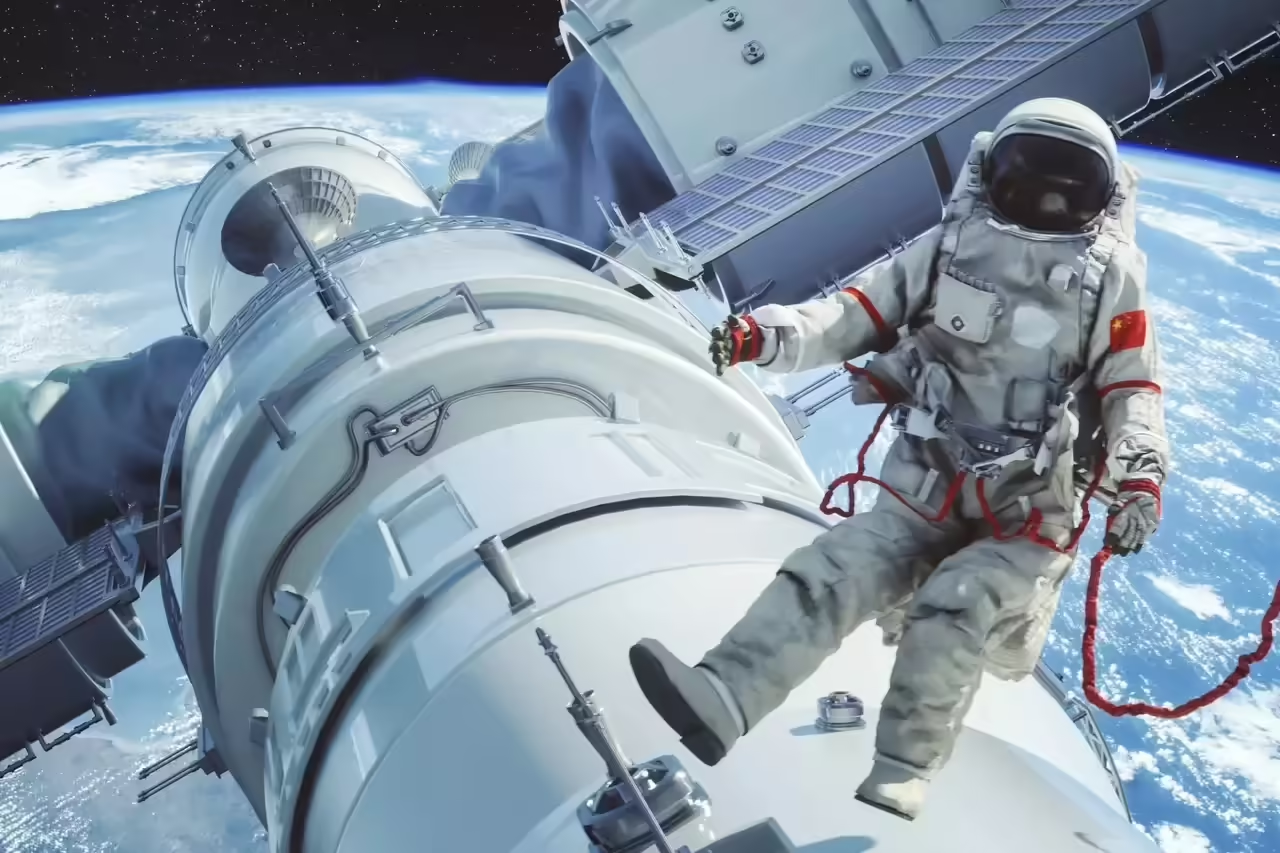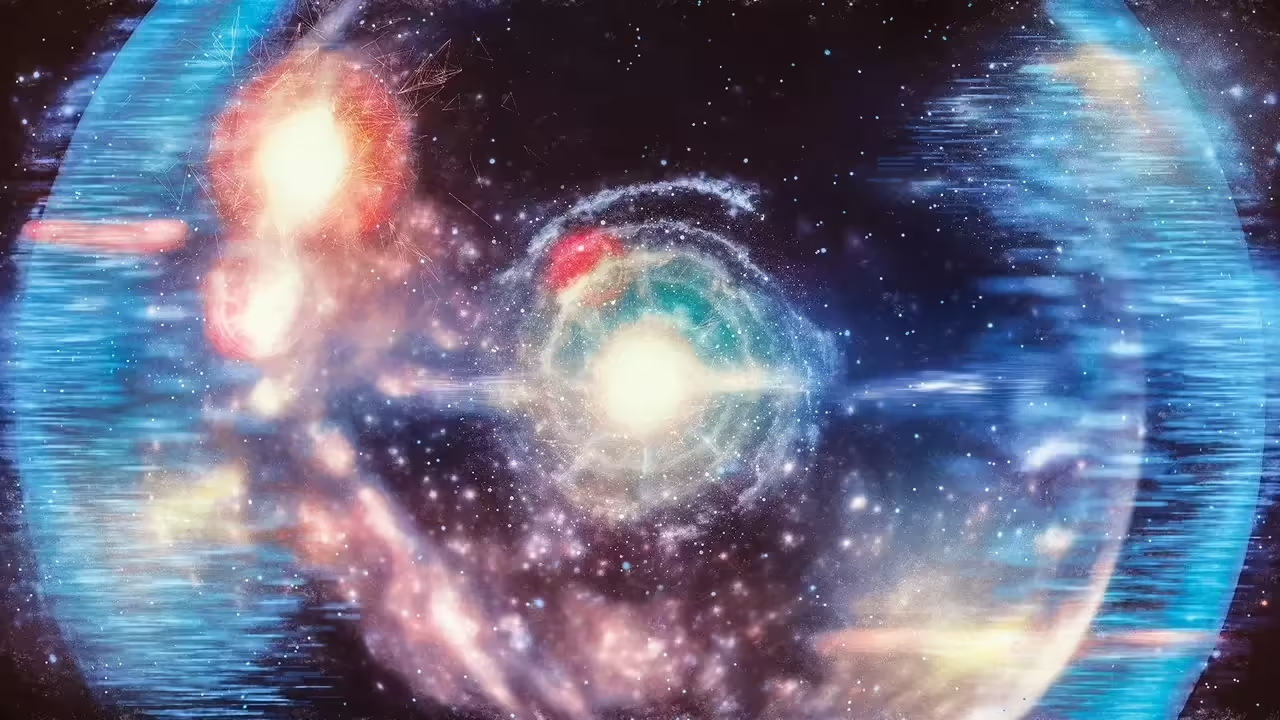
In the vast canvas of the universe, humanity has yearned since time immemorial for the possibility of exploring the stars that adorn the dark celestial vault. Space travel, an endeavor that for centuries inhabited the realms of imagination, finally materialized in the 20th century with the conquest of outer space. This article aims to critically analyze this phenomenon, questioning whether space travel represents a giant leap for humanity or a risky misstep.
From ancient mythological tales to Galileo Galilei’s telescopic observations, fascination with the cosmos has been intrinsic to our species. However, it was in the modern era that technology and determination converged to fulfill the ancestral dream of touching the stars. The historical significance of this endeavor crystallizes in emblematic moments, such as the launch of Sputnik 1 by the Soviet Union in 1957, marking the beginning of the space age.
Space travel has witnessed unforgettable milestones, such as Yuri Gagarin’s feat, the first human to orbit the Earth in 1961, and the iconic landing of Apollo 11 on the Moon in 1969, when Neil Armstrong uttered the eternal words: “That’s one small step for [a] man, one giant leap for mankind.” These transcendental events have left an indelible mark on human history, symbolizing the innate ability to explore the unknown and overcome seemingly insurmountable limits.
However, while space exploration has evoked admiration and pride, it has also raised profound questions about its purpose and long-term viability. Is space travel a means to expand our understanding of the cosmos and ensure the survival of humanity, or is it a colossal expense diverting resources from more urgent issues on our own planet?
Scientific Exploration and Discoveries
Space exploration, beyond its spectacular and romantic aspects, has been an essential catalyst for numerous scientific and technological advances that have transformed our understanding of the cosmos and had significant impacts on life on Earth. This section delves into the scientific benefits and technological advances derived from the relentless pursuit of the stars.
Scientific Exploration:
Understanding the Cosmos: Observation of celestial objects from space has allowed astronomers to obtain more precise and detailed data about planets, stars, and galaxies. Space telescopes like the Hubble have captured astonishing images that have transformed our understanding of the universe, revealing previously unknown cosmic phenomena.
Origins of the Solar System: Space missions have gathered crucial data about celestial bodies, shedding light on the processes that gave rise to our solar system. For instance, the Rosetta probe provided detailed information about the comet 67P/Churyumov-Gerasimenko, offering clues about the components that contributed to the formation of the solar system.
Exoplanet Research: The search for planets beyond our solar system has led to the discovery of thousands of exoplanets. These findings not only expand our understanding of the diversity of planetary systems but also fuel speculation about the existence of life beyond Earth.
Technological Advances:
Development of Innovative Materials: Space engineering has driven the development of advanced and resilient materials to withstand the extreme conditions of space. These materials have been subsequently applied in the manufacturing of medical devices, terrestrial vehicles, and consumer technologies.
Communication Technologies: The need to establish reliable communications between Earth and space probes has led to the development of satellite communication technologies. These technologies have revolutionized global communications, enabling efficient long-distance data transmission.
Medical Research: Prolonged exposure to space environments has prompted research into the physiological effects on the human body. This research has resulted in advances in medicine, such as therapies to counteract bone and muscle loss and telemedicine techniques.
Space exploration, in addition to satisfying our innate curiosity, has proven to be an endless source of knowledge and a driving force for innovations that benefit humanity as a whole. By exploring the stars, we not only expand our cosmic horizons but also reap earthly fruits in the form of technologies and knowledge that transform our daily lives.
Historical Perspective of Space Travel
The history of space travel is an epic narrative spanning decades of efforts, innovations, and extraordinary achievements. From the early rudimentary rockets to interplanetary missions, this historical journey highlights the most significant milestones in space exploration.
Sputnik 1 (1957): The Soviet Union marked the beginning of the space age with the launch of Sputnik 1, the first artificial satellite of Earth. This event not only astonished the world but also triggered the space race between the United States and the Soviet Union during the Cold War.
Yuri Gagarin (1961): Yuri Gagarin became the first human to orbit the Earth aboard the Vostok 1 spacecraft. His pioneering flight demonstrated that humanity could venture beyond Earth’s atmosphere and paved the way for future manned space exploration.
Apollo Program (1969-1972): NASA achieved the historic milestone of moon landing with the Apollo 11 mission. Neil Armstrong and Buzz Aldrin became the first humans to walk on the Moon, leaving an indelible mark on the history of space exploration.
Space Stations (1971 onwards): The Soviet Union launched the Salyut 1 space station, marking the beginning of the era of space stations. The Mir space station and later the International Space Station (ISS) have served as platforms for scientific research and international cooperation in space.
Space Shuttles (1981-2011): NASA’s Space Shuttle program provided a reusable means of sending payloads and crews into space. Despite tragedies like the Challenger disaster in 1986 and the Columbia in 2003, the program significantly contributed to the assembly and maintenance of the ISS.
Interplanetary Exploration (since the 1960s): Missions like Viking (1976), Voyager (launched in 1977), and Mars Rovers (since 1997) have explored Mars and other celestial bodies, providing crucial data about geology and the possibility of extraterrestrial life.
Private Space Exploration (21st century): Private companies, such as Elon Musk’s SpaceX, have revolutionized space exploration with commercial launches and the development of reusable spacecraft. This has redefined access to space and paved the way for more ambitious missions.
Future Perspectives (21st century and beyond): Projects such as the exploration of Mars, asteroid mining, and the search for exoplanets suggest that space exploration will continue to challenge the limits of human imagination in the coming decades.
The Role of Space Agencies in the Development of Space Travel
Space agencies have played a crucial role in the development and advancement of space travel, marking significant milestones and fostering discoveries that have transformed our understanding of the cosmos. Here, we highlight the contributions of some of the main space agencies, such as NASA (National Aeronautics and Space Administration), ESA (European Space Agency), and others, in this thrilling journey beyond Earth’s borders.
NASA (National Aeronautics and Space Administration):
Apollo Program (United States): NASA was the architect of the Apollo program, which culminated in the human landing on the Moon in 1969 with the Apollo 11 mission. This monumental achievement not only represented a technological triumph but also solidified humanity’s presence in space.
Space Stations and International Cooperation: NASA has been a pioneer in the construction and maintenance of space stations, such as Skylab, the Space Shuttle, and its fundamental contribution to the International Space Station (ISS). Additionally, it has promoted international cooperation in space exploration, collaborating with agencies worldwide on joint missions.
Interplanetary Exploration: NASA’s robotic missions, such as Viking, Voyager, and the Mars Rovers, have explored Mars and other planets in the solar system, providing crucial data to understand geology, atmosphere, and the possibility of extraterrestrial life.
ESA (European Space Agency):
International Collaboration and Interplanetary Missions: ESA has significantly contributed to space exploration through international collaborations, such as its participation in the ISS. Additionally, it has led interplanetary missions, like the Rosetta probe, which landed on comet 67P/Churyumov-Gerasimenko, providing valuable data about the composition of these celestial bodies.
Galileo Program: ESA has developed and launched the Galileo satellite navigation system, providing a European alternative to the American GPS system. This has applications not only in civil but also military and scientific domains.
Other Agencies and Actors:
Roscosmos (Russia): The Russian space agency has played a historic role in space exploration, being the first to launch a satellite, a human into space, and a space station, Mir. Collaboration between Roscosmos and NASA has been essential for the maintenance of the ISS.
SpaceX and Private Companies: Private companies, such as Elon Musk’s SpaceX, have revolutionized access to space. SpaceX has developed reusable rockets, sent crewed missions to the ISS, and demonstrated the viability of commercial space exploration.
ISRO (Indian Space Research Organisation): ISRO has achieved notable successes, such as the Mars Orbiter Mission, making India the first Asian nation to reach Mars orbit.
Impact on Terrestrial Technology: Cosmic Connection to Daily Life
The influence of space technology on daily life and various scientific fields is profound and extensive. Innovations developed for space exploration have not only propelled space travel but have also left an indelible mark on our daily lives and numerous scientific sectors. Here are some of the most significant impacts:
Communication Technologies:
Communication Satellites: The network of satellites in Earth’s orbit has revolutionized communications. From satellite TV to mobile communications and GPS navigation, these technologies are fundamental in modern life.
Advances in Medicine:
Medical Imaging Devices: Technologies developed for space observation, such as image sensors and CCD cameras, have been adapted for use in medical devices like magnetic resonance imaging (MRI) and computed tomography (CT), improving the diagnosis and treatment of diseases.
Materials and Nanotechnology:
Development of Resilient Materials: The need for resilient and lightweight materials in spacecraft construction has led to the development of advanced materials. These have been applied in the manufacturing of sports equipment, automobiles, and electronic devices, enhancing their performance and durability.
Renewable Energy:
Space Solar Panels: Solar panels developed for powering satellites and space stations have become an essential source of renewable energy on Earth. Space solar technology has directly influenced the expansion of solar energy as a sustainable source.
Agriculture and Resource Management:
Remote Sensing: Satellites equipped with remote sensing sensors provide valuable information for terrestrial resource management. They are used in agriculture for crop monitoring, harvest prediction, and water resource management.
Meteorological Information:
Meteorological Satellites: Space observation has significantly improved the ability to forecast weather and monitor natural phenomena. Meteorological satellites provide crucial data for accurate forecasts and early warnings.
Consumer Technology:
Development of Microchips and Integrated Circuits: Miniaturization of space technology has led to the development of microchips and integrated circuits used in computers, smartphones, and various consumer electronic devices.
Transportation and Navigation:
Global Positioning System (GPS): Navigation satellites have made precise location and navigation possible worldwide. From route planning to transportation logistics, GPS has transformed the way we move around the world.







